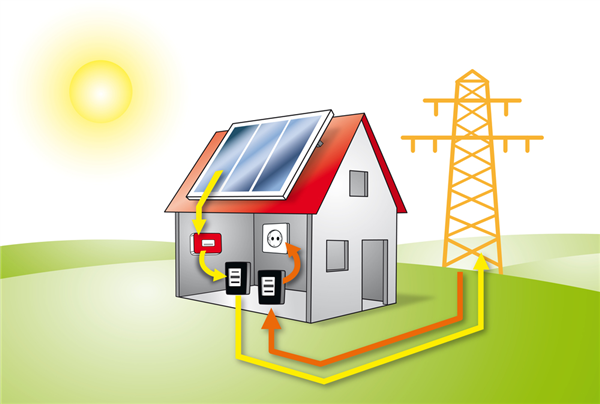Projections from a research firm[1] indicated that 2015 would likely be a record year with 25 percent growth for solar installations; and the amount of energy capacity generated from solar would grow to 50 GW worldwide compared to 40 GW in 2014. One of the key end equipments in each of these solar energy harvesters is a solar inverter. A solar inverter, or any kind of inverter for that matter, will take a direct current (DC) input and convert it to an alternating current (AC) output that can be used to power standard appliances and electronics in a home or business. While just about any high power DC source can be used, the largest sector of inverter growth is in renewables, particularly solar energy.
When installed in a home or business, the solar inverter can connect to the electricity grid to offset consumption, or in some cases even provide energy back to the utility. To do this, it must be able to synchronize its AC output with the grid voltage and comply with certain safety requirements such as shutting off the AC output when the grid voltage disappears. We wouldn’t want to be energizing the grid when workers are trying to repair high voltage lines after a big storm.
Traditionally, a series of solar panels are connected to a string inverter. These inverters take approximately 600V DC (in case of residential string) input, which equates to a few kilowatts of solar capacity. An inverter for a solar farm will need to be sized appropriately, but centralizes (central inverter) the conversion and makes the overall solar harvester system cheaper to install when designed correctly. Another topology is a solar micro-inverter that is sized to match a single panel, or about 200 W to 300 W. By distributing the inversion process, the solar array can accommodate much more complex rooftops and enable smaller arrays to be installed that wouldn’t typically reach the input voltages of the string inverter.
At the core of each of these different types of solar inverters are a few core sub-systems:
Digital controller
A typical solar inverter consists of a full bridge for the DC-AC which connects to the grid and a DC-DC stage which connects to the panel to boost the voltage for the inverter to be able to feed power into the grid. The goal of solar inverters is to extract the maximum power from the panel and feed clean power into the grid. To ensure this the power stage voltages and currents must be accurately sampled, and pulse width modulation (PWM) for the power switches in the DC-AC and DC-DC accurately generated. A digital controller can be more efficient by sensing line load changes faster, have greater power density due to higher operating frequencies and offer up some additional features for system level integration since we have a full central processor unit core to work with. Learn more about TI digital power solutions.
Isolation
Overcoming voltage limitations is a huge problem in any power electronics design. In order to sense and control these voltages, we use capacitive isolation devices. These devices allow high frequency signals to cross power boundaries, but block the high voltage DC. This isolation technology has a long life expectancy and low electro-magnetic emissions, making it well suited for industrial applications. In the inverters, we also use isolated power supplies so that we can power the electronics on the other side of the isolation boundary effectively and high voltage MOSFETs and IGBTs to control the power paths.
Gate drivers
For the power path control, we use MOSFETs and IGBTs (see: TI gate driver solutions). These devices are designed to be able to switch very high voltages and currents, which makes them a great fit in the digital buck converters in an inverter. The real key with using these devices is driving them properly. The input acts as a capacitor that must be charged and discharged each time the FET is switched. When switching these devices at the high speeds required by the inverter, several amps can be required to properly drive them. If they aren’t switched fast enough, the conversion stage can suffer huge efficiency losses. To do this properly, dedicated drivers are used, which translate the digital PWM from the controller to the current required by the FET.
One of the upcoming trends is the ability to monitor and control energy production statistics of residential/commercial solar installations. Adding low-power wireless connectivity standards like ZigBee®, 6LowPAN or wired communication such as power line communication (PLC) is becoming a common place in solar harvester systems. Once connected to a backhaul network, getting the data onto the cloud for the user to view anywhere is just a step away. Additionally, the communications systems can be used to monitor the system and alert the owner of any potential upcoming maintenance
Several new TI Designs reference designs help engineers accelerate time to market for solar inverter designs. Be sure to check out Solar Inverter page for solar inverter system solutions. Also, check out our new “Systems Made Simple” training series for a deeper systems discussion on building your next solar inverter.
Additional resources:
- Watch our Systems Made Simple video series.
- Visit our Solar String Inverters page for more information.
- See our Solar Micro Inverters block diagram.
- Read the popular new blog post on Power House: How to Create Power Solutions for Solar Power
- Check out these TI Design reference designs:

